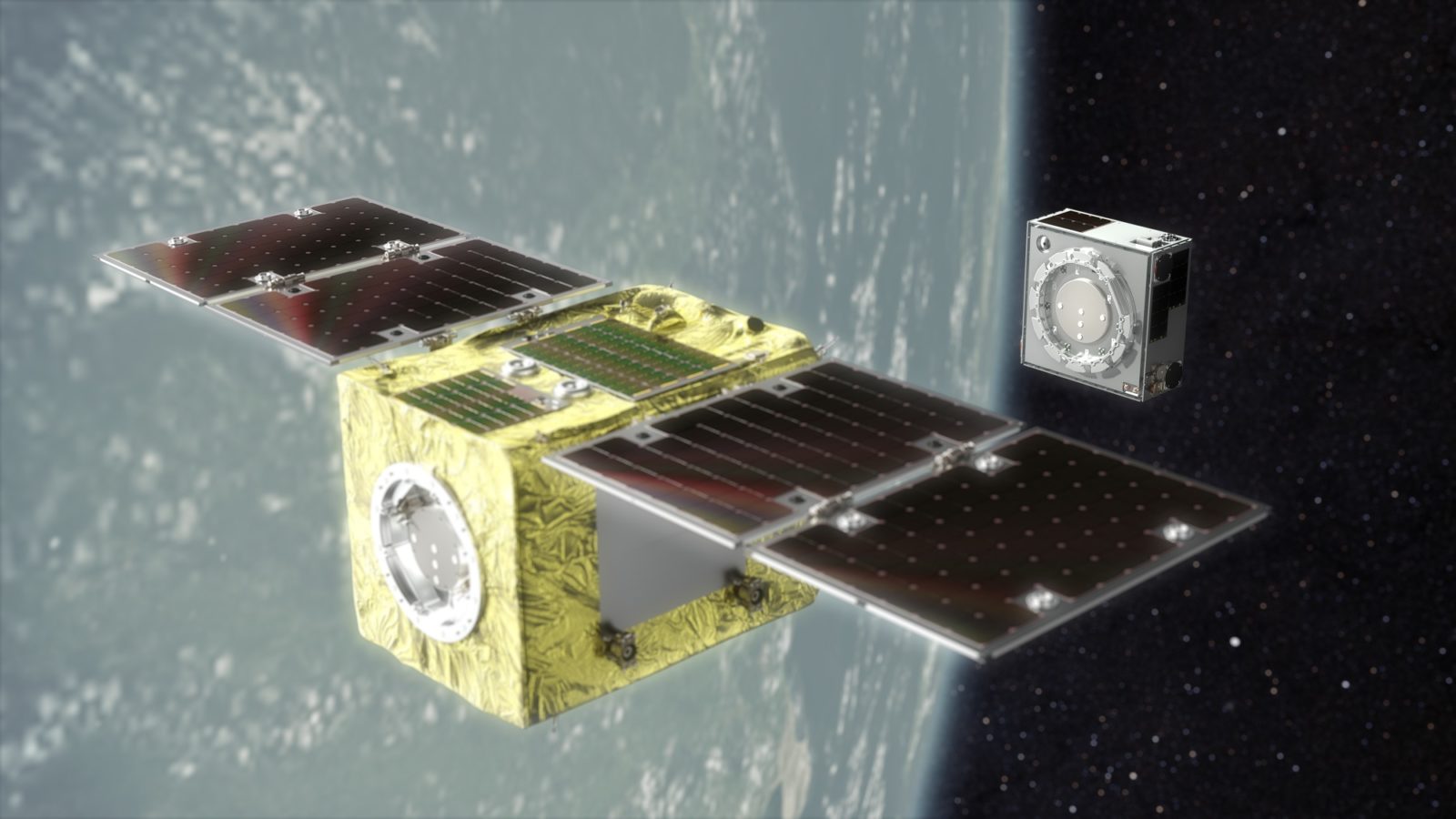Astroscale space junk removal satellite nearly catches target in orbital test
The demonstration was suspended because of a "technical anomaly."

A satellite designed to test technologies that could one day help clean up Earth orbit has been busy the past few days zooming in on a simulated piece of debris using its onboard sensors. The experiment, by Japanese company Astroscale, however, stopped short of catching the target as engineers detected "anomalous spacecraft conditions."
Astroscale, which plans to provide space cleanup services commercially as early as 2024, said in a statement that the demonstration, part of the End-of-Life Services by Astroscale-demonstration (ELSA-d) mission, was a success despite the last-minute hitch.
"ELSA-d was never going to be easy, even under ideal circumstances, but our global team has overcome numerous challenges and had tremendous successes, which will accelerate the already rapid growth of the on-orbit servicing market," Nobu Okada, founder and CEO of Astroscale, said in the statement.
During the seven-hour orbital maneuver, the 386-pound (175 kilograms) "servicer" spacecraft, orbiting 340 miles (550 kilometers) above Earth, was guided by ground control teams to within 520 feet (159 meters) from the 37-pound (17 kg) "client" satellite. The chaser then switched from what engineers call absolute navigation (relying on ground control and GPS sensors) to relative navigation mode, in which it moves completely autonomously, relying on its onboard systems.
Space debris: More storm clouds ahead in orbit, experts say
"The journey to reunite the servicer and client allowed us to prove even more key technologies and operational capabilities required for commercial end-of-life debris removal services," Seita Iizuka, ELSA-d project manager at Astroscale, said in the statement. "Proving these capabilities gives us, and our partners, greater confidence in our debris removal service developments."
The handover between the absolute and relative navigation systems and the subsequent autonomous tracking and approach to the target were the greatest success of the demonstration, Astroscale said in the statement.
Breaking space news, the latest updates on rocket launches, skywatching events and more!
The chaser was expected to eventually capture the client using a magnetic system fitted on both spacecraft. The operation, however, was eventually aborted. The two spacecraft were then separated for safety reasons and are now 1,000 miles (1,700 km) apart. Over the coming weeks, the ground control teams will investigate the issues that prevented the capture, before deciding on next moves.
"The team is analyzing the potential for a safe and viable magnetic recapture of the client," Astroscale told Space.com in an email. "We cannot confirm a timeframe at this stage and will make another statement whether we do or do not proceed with the recapture."
ELSA-d, the first experiment of its kind, launched from Baikonur Cosmodrome in Kazakhstan in March 2021. The two spacecraft traveled to space together as a stack attached via the magnetic docking system. They were separated during an earlier test in August 2021.
The subsequent demonstration campaign has been plagued by setbacks. A previous autonomous approach attempt was halted in January due to "technical anomalies," which involved a failure of four of the chaser spacecraft's eight thrusters. The issue hasn't been solved since, meaning all subsequent maneuvers including the latest approach had to be performed with only half of the propulsion units available.
"This restricted the ability of the servicer to perform detailed rendezvous maneuvers with the client as originally planned," Astroscale said in the statement.
Despite the setbacks, Astroscale hopes to be on track to start cleaning up space junk commercially within the next couple of years. Last year, the company signed a contract with megaconstellation operator OneWeb to work together on advancing debris-removal technology. Astroscale envisions a service that could deorbit multiple spacecraft, one by one, in a single mission, helping to maintain a sustainable and safe orbital environment. The satellites, however, would have to be fitted with magnetic docking plates before launch, to allow a chaser spacecraft to catch them later.
Megaconstellations, such as OneWeb's, but especially SpaceX's Starlink, worry many space safety experts. With the speedily increasing number of satellites in orbit, the risk of orbital collisions is getting higher and higher. Defunct satellites that are no longer controlled present the greatest danger. Removing them right after the end of their mission would help maintain order in the near-Earth environment.
Experts worry that the situation, if left unchecked, might lead to the so-called Kessler Syndrome, an unstoppable cascade of collisions predicted in the late 1970s by NASA physicist Donald Kessler.
Follow Tereza Pultarova on Twitter @TerezaPultarova. Follow us on Twitter @Spacedotcom and on Facebook.

Tereza is a London-based science and technology journalist, aspiring fiction writer and amateur gymnast. She worked as a reporter at the Engineering and Technology magazine, freelanced for a range of publications including Live Science, Space.com, Professional Engineering, Via Satellite and Space News and served as a maternity cover science editor at the European Space Agency.
